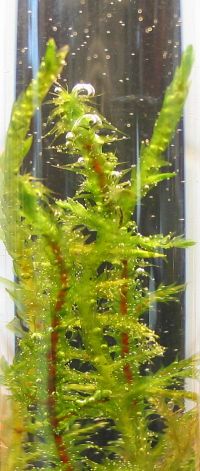Oxygen
| O | 8 |
| Oxygen | |
Abundance: 0.15% atmosphere 46,6% crust
Oxygen (periodic table symbol: O8) is a chemical element that can be found in the atmosphere and in most minerals on Mars. Almost half of the mass of the Martian crust is Oxygen, bound up in various minerals. Oxygen is created in stars from the fusion of Carbon and Helium. Oxygen has 8 protons and the most common isotope is oxygen 16. O17 and O18 exist and are stable. Oxygen needs two electrons to fill its outer electron shell, which makes it a powerful oxidizer. (Only Fluorine is a more powerful oxidizer, but Fluorine is a fairly rare element.)
Contents
Relevance for life
The metabolism of human beings, animals and aerobic microbes depends on oxygen. The atmosphere of Mars contains only 0,15 % oxygen, which is not enough to support animal or human life. The minimum concentration required is about 15% oxygen, or 100 times more (depending on the atmospheric pressure)(reference needed).
- Oxygen is used by life within the Carbon cycle, where CO2 is consumed by plants through photosynthesis, liberating oxygen than can then be used by plants for other processes or by animals to support the combustion of carbohydrates, that liberates CO2, completing the cycle.
- Biological combustion also produces water, and therefore consumes oxygen that is removed from the biological cycle. But in tiny amounts compared to the other requirements that life has for water as a solvent and media for chemical reactions. However, Oxygen is eventually returned to the atmosphere through photodissociation of water with UV light in the upper atmosphere.
- If Oxygen becomes common in a future Mars' terraformed atmosphere, an Ozone layer will also build up 'naturally' which will protect the surface from Ultraviolet light.
Production
Oxygen can be produced in situ:
- in greenhouses by plants.
- in photobioreactors by algae.
- by reduction of carbon dioxide from the martian atmosphere, or carbonate minerals via either molten salt reduction[1] or via MOXIE style solid oxide electrolysis.
- by reduction of oxide minerals, either at low temperature in aqueous solution[2] or at high temperature in molten salts[3]. This is required to free up metals from many ores.
- by electrolysis of water
- by the decomposition of perchlorates in the soil.
- by thermal decomposition of water through the Sulfur/Iodine[4] or Zinc/Sulfur/Iodine[5] cycles.
Electrolysis
Submarines are a fairly good analog for a Mars habitat, a sealed system that has to manufacture oxygen and remove carbon dioxide. How Submarines produce oxygen[6] using electrolysis.
Two electrodes, positive and negative are charged using an electric current. Pure water is required because salt water will create chlorine gas which can be deadly if not adequately separated. On a submarine, reverse osmosis is used to filter out the salt, the same might be done on Mars. The pure water has potassium hydroxide (KOH) added as a catalyst to make the electrolysis more efficient. The hydrogen created in a submarine is exhausted from the boat, but would represent a vary valuable co-product on Mars.
Gas monitoring
Monitoring the atmosphere in every compartment of a Martian habitat is required in order to ensure the proper distribution of oxygen and to measure the concentration of contaminants, as these can cause health or fire risks. CO2 is usually monitored as a proxy for oxygen, as the toxic concentration of CO2 is reached much faster than the lowest threshold for respiration.
The gasses that should be monitored are: O2, CO2, H2, N2, H2O, pressure (a total of all of these). Other gasses monitored in mTORR are: CO, R114 (refrigerant), TRICH, ALIPHAT, AROMAT, BENZENE, R134A (refrigerant). These are gases used in systems that should not escape into the breathable air. For all these gasses they have calibration samples to confirm the monitors are working correctly.
For each bad gas being monitored they have hand held sniffers that detect concentrations to find a leak. Sniffers work just like a geiger counter or metal detector. The sniffer only detects relative concentration, it is not a numerical measurement. Consequently it has a small, medium, or large setting to vary sensitivity.
Emergency supplies
- Emergency supplies or backup supplies in small vehicles is provided by burning a Chlorate candle (aka an Oxygen candle). Iron (Fe) and Sodium Chlorate (NaClO3).
Fe + O2 -> Fe2O2 + heat
heat + NaClO3 -> NaCl + O2
- Oxygen candles are used on the space station.
- Fires are classified in various ways. A Class Delta fire (self oxidizing fire), like an oxygen candle, cannot be extinguished, it has to burn out.
Uses for oxygen
- Propellant. Oxygen is often chosen as an oxidizer for chemical propulsion.
- Atmospheric component. The standard Earth atmosphere contains 21% Oxygen.
- Chemical reagent as an oxidizer.
Related Articles
Oxygenlunarp on Lunarpedia.
- ↑ https://eprints.lib.hokudai.ac.jp/dspace/bitstream/2115/57796/1/CO2OtakeREMTRev2.pdf
- ↑ https://link.springer.com/article/10.1007/s10800-017-1127-5
- ↑ https://link.springer.com/article/10.1007/s10800-017-1143-5
- ↑ https://doi.org/10.1016/j.ijhydene.2006.05.013
- ↑ https://doi.org/10.1016/j.ijhydene.2015.11.049
- ↑ Destin Sandlin (2021). How Do Nuclear Submarines Make Oxygen?- Smarter Every Day 251 [Video]. https://www.youtube.com/watch?v=g3Ud6mHdhlQ; SmarterEveryDay.







